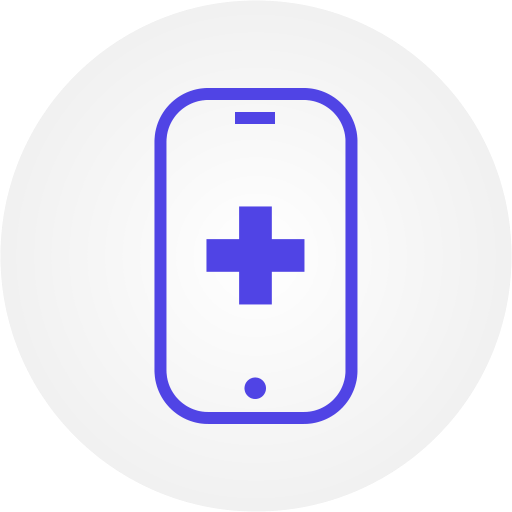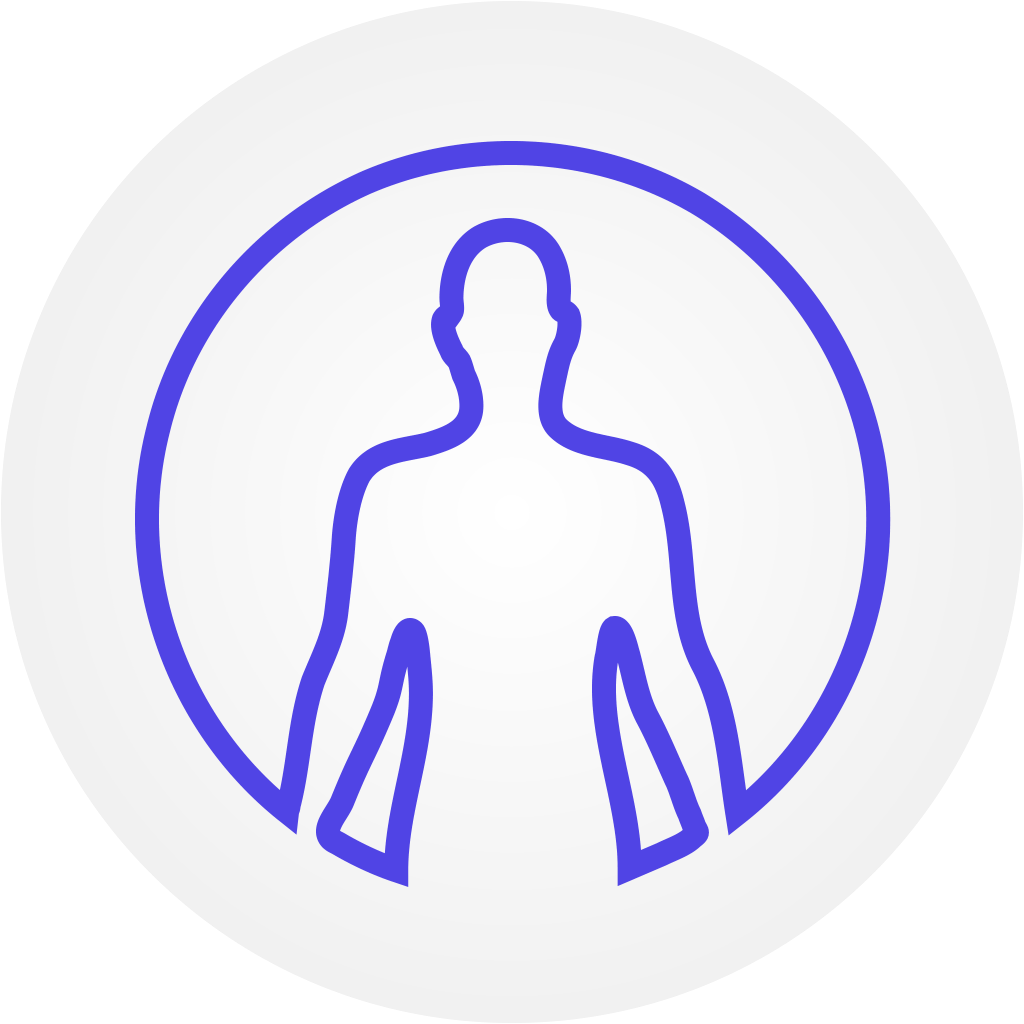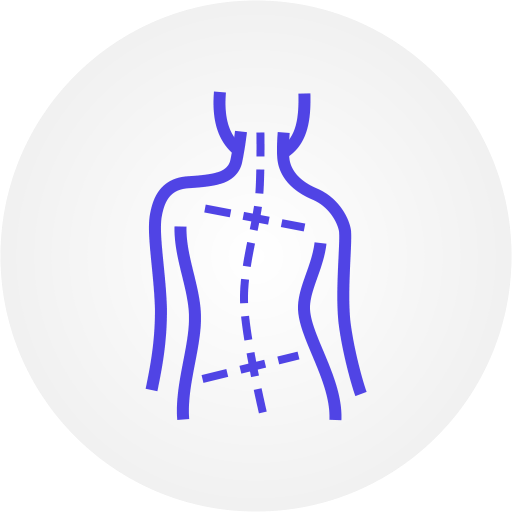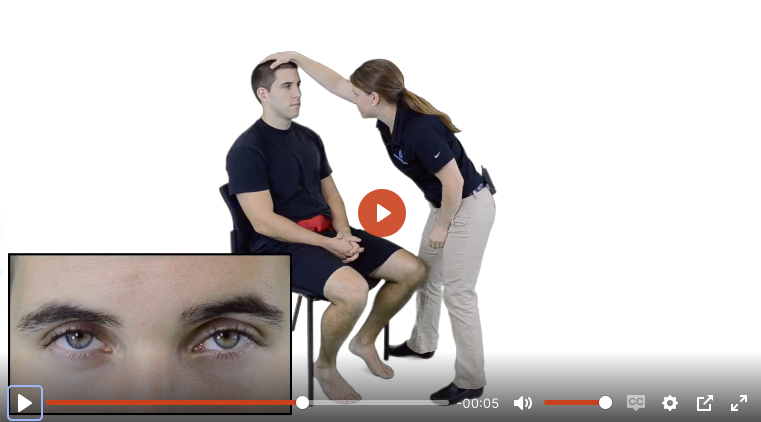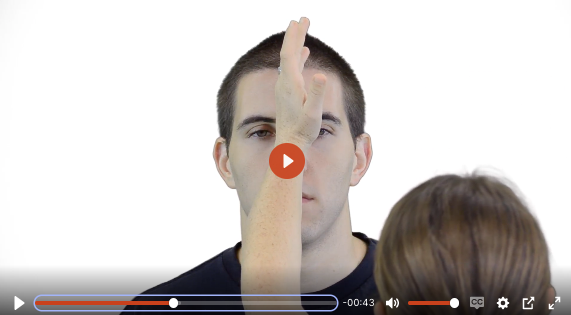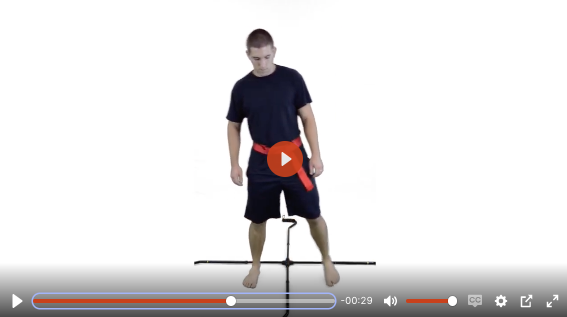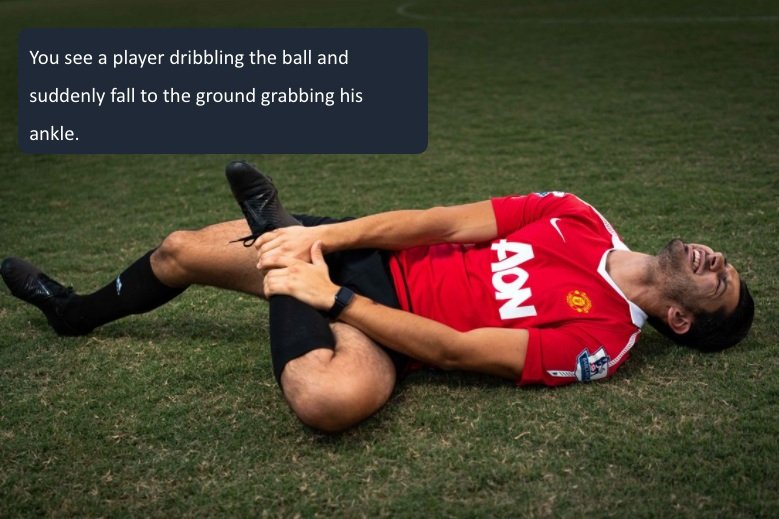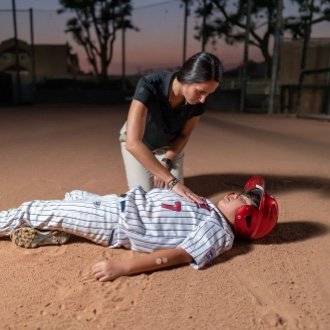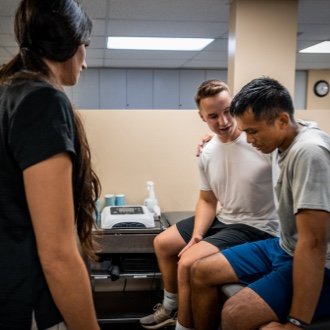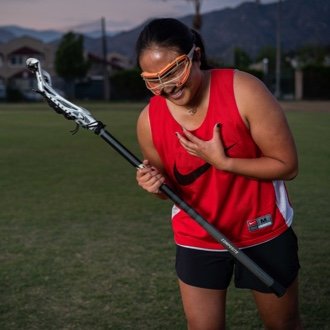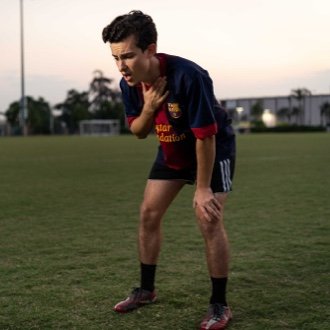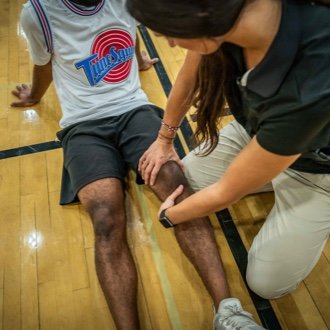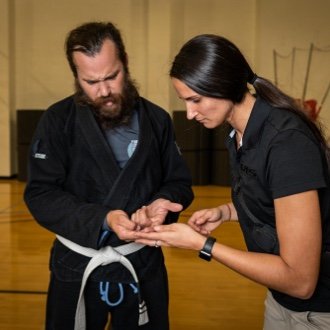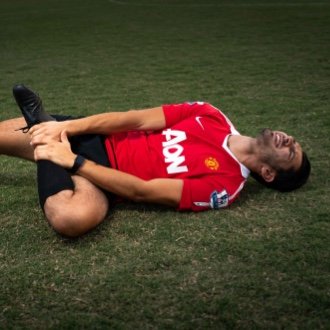Join ATu education lead, Christopher Schmidt, PhD, ATC, for a 45-minute session on using the ATu suite of apps to enhance teaching and learning across the athletic training curriculum.
Join ATu education lead, Christopher Schmidt, PhD, ATC, for a 45-minute session on using the ATu suite of apps to enhance teaching and learning across the athletic training curriculum.
Summer Webinar Series: Every Friday at 12pm PST
00:00 Chris Schmidt Education Lead Introduction
01:24 James Syms Introduction
02:42 ATu contributers
03:30 Professional Disclosures
05:10 What is ATu?
10:22 Curriculum Design in Athletic Training
24:45 Operational Standards
29:40 Simulations
36:57 Operational Standards for Simulations
42:51 How ATu supports the CAATE Standards
49:25 Using ATu to supercharge your classroom
51:14 Educator Resources
Join ATu education lead, Christopher Schmidt, PhD, ATC, for a 45-minute session on using the ATu suite of apps to enhance teaching and learning across the athletic training curriculum.
Summer Webinar Series: Every Friday at 12pm PST
00:00 Chris Schmidt Education Lead Introduction
01:11 James Syms Introduction
04:19 What is ATu?
15:50 Surface Anatomy Palpation App
26:20 Educator Resources/Worksheets
29:29 ROM, MMT, and Palpation App
37:45 Lab Handouts
41:56 Simulations
56:04 Applicability for Contemporary AT Curriculum Design
Join ATu education lead, Christopher Schmidt, PhD, ATC, for a 45-minute session on using the ATu suite of apps to enhance teaching and learning across the athletic training curriculum.
Hi Everyone, It’s Mike from ATu,
We are excited to announce a big new update to the NeuroRehab app, authored by Dr. Sara Kraft and created in Partnership with the Medical University of South Carolina.
In this new update, all intervention videos have been carefully reorganized by impairments or functional movements to improve searchability while improving usability in the clinic and the classroom.
A full examination of a neuro patient has been converted into an interactive learning experience, guiding students and new clinicians through the thought process of an expert during the evaluation session. This experience includes formative feedback and interactive quizzing to help develop clinical reasoning. These e-learning modules allow for score reporting and tracking of time spent in each module
Case studies built on clinic-based patient videos have been created to enhance clinical reasoning development and to create opportunities to engage students in context-rich learning environments. These cases include clients in the following categories:
Stroke
Spinal cord injury
Traumatic brain injury
Parkinson’s disease
Wheelchair- Evaluation and intervention
The NeuroRehab app also includes a centralized hub for available online resources and websites to facilitate clinician and student access to enhance evidence-based clinical practice.
The next generation of learning in Neurological Rehabilitation. Brought to you by the team at ATu!
Join ATu education lead, Christopher Schmidt, PhD, ATC, for a 45-minute session on using the ATu suite of apps to enhance teaching and learning across the athletic training curriculum.
Summer Webinar Series: Every Friday at 12pm PST
00:00 Chris Schmidt Education Lead Introduction
01:46 James Syms Introduction
02:15 Michael Wong Introduction
02:30 Tracy Moore Introduction
03:32 What is ATu?
12:42 Evidence-Based Taping and Splinting Standards
19:50 Evidence-Based Taping and Splinting App
42:17 Splinting App
51:10 Graded Exposure for Motor Development with ATu
Join ATu education lead, Christopher Schmidt, PhD, ATC, for a 45-minute session on using the ATu suite of apps to enhance teaching and learning across the athletic training curriculum.
Summer Webinar Series: Every Friday at 12pm PST
00:00 Chris Schmidt Education Lead Introduction
01:28 James Syms Introduction
01:49 Tracy Moore Introduction
04:03 Matt Mills & Lynette Carlson Introduction
04:42 What is ATu?
12:20 Emergency Care app
41:30 Emergency Care Simulations
1:02:00 Value for AT Curriculum Design
Join ATu education lead, Christopher Schmidt, PhD, ATC, for a 45-minute session on using the ATu suite of apps to enhance teaching and learning across the athletic training curriculum.
Summer Webinar Series: Every Friday at 12pm PST
00:00 Chris Schmidt Education Lead Introduction
01:11 Mike Wong Introduction
01:35 Tracy Moore & James Syms Introduction
03:04 Amy Radu Introduction
03:38 What is ATu and why was it built?
18:33 PNF app
25:30 Educator Resources Bar
38:45 Applicability & Value for AT Curriculum Design
45:22 Assigning tasks & Simulations
59:45 Student Rates
Join ATu education lead, Christopher Schmidt, PhD, ATC, for a 45-minute session on using the ATu suite of apps to enhance teaching and learning across the athletic training curriculum.
Summer Webinar Series: Every Friday at 12pm PST
00:00 Chris Schmidt Education Lead Introduction
01:26 Mike Wong Introduction
01:53 James Syms Introduction
02:38 What us ATu and why was it built?
06:42 Two Year AT Curriculum with ATu apps
12:40 Physical Agents
23:30 Graded Exposure for Motor Skill Development with ATu
28:55 Using your educator resources bar
31:55 Lab Handouts
34:23 Simulations
57:01 Integrating ATu into Teaching & Classroom
Join ATu education lead, Christopher Schmidt, PhD, ATC, for a 45-minute session on using the ATu suite of apps to enhance teaching and learning across the athletic training curriculum.
Summer Webinar Series: Every Friday at 12pm PST
00:00:00 Chris Schmidt Education Lead Introduction
00:01:32 Mike Wong Founder Introduction & James Syms Introduction
00:03:35 What is ATu?
00:07:01 Overview
00:12:30 Surface Anatomy Palpation
00:19:30 Educator Resources: Linked Lab Handouts
00:24:02 ROM, MMT Palpation
00:46:26 Lab Handouts
00:52:53 Graded Exposure for Motor Skill Development with ATu
00:55:55 Developing Clinical Reasoning through Simulation
00:57:04 ROM, MMT Palpation Simulations
01:04:31 Applicability for Contemporary AT Curriculum Design
01:09:20 Why is this beneficial to students
Join ATu education lead, Christopher Schmidt, PhD, ATC, for a 45-minute session on using the ATu suite of apps to enhance teaching and learning across the athletic training curriculum.
Summer Webinar Series: Every Friday at 12pm PST
00:00:00 Chris Schmidt Education Lead Introduction
00:01:48 Mike Wong Founder Introduction & James Syms Introduction
00:02:30 What is ATu?
00:03:45 Overview
00:05:41 Increased Need for Simulation-Based Learning
00:08:10 What are simulations?
00:09:15 Simulations in AT Education
00:14:49 Common Barriers
00:19:30 Difference between PhysioU and ATu
00:25:41 Simulations
00:45:35 Emergency Care Simulations
00:55:40 Applicability for Contemporary AT Curriculum Design
01:01:10 Other Simulations
Join ATu education lead, Christopher Schmidt, PhD, ATC, for a 45-minute session on using the ATu suite of apps to enhance teaching and learning across the athletic training curriculum.
Summer Webinar Series: Every Friday at 12pm PST
00:00:00 Chris Schmidt Education Lead Introduction
00:01:00 Mike Wong Founder Introduction
00:02:58 James Syms Introduction
00:03:50 Webinar Overview
00:05:16 What is ATu and why did we build it?
00:09:28 ATu apps for your classroom
00:13:33 Our common mission and shared challenges
00:15:00 A Solution: Use Technology to optimize Teahing and Learning
00:16:00 Orthopaedics app
00:35:19 Special Tests app
00:39:48 Simulations apps
00:53:05 Using ATu Graded Exposure for Skill Development & Clinical Application
00:54:34 Orthopaedics Worksheet
00:59:20 Applicability for ATU Curriculum Design
01:09:55 Want to learn more? Let's chat!
01:10:48 Simulations
Join ATu education lead, Christopher Schmidt, PhD, ATC, for a 45-minute session on using the ATu suite of apps to enhance teaching and learning across the athletic training curriculum.
Summer Webinar Series: Every Friday at 12pm PST
00:00:00 Chris Introduction
00:01:00 Team Introduction
00:04:30 Webinar Overview
00:06:05 What is ATu and why did we build it?
00:10:32 ATu apps for your classroom!
00:11:06 Curriculum Design in Athletic Training
00:16:28 Are we supposed to be superhuman?
00:17:59 A Solution: use technology to optimize teaching and learning
00:21:05 ROM, MMT, and Palpation app
00:24:08 Lab Handouts
00:31:30 Physical Agents app
00:37:12 Simulations
00:50:00 Comments and Questions
After 2 years of research and development, the ATu team is proud to deliver these new apps and modules to our users. They are now officially available on our web app. Click an app to learn more:
Log in to your ATu account and check it out! Don’t already have an ATu account? Create a trial account here!
Application
NeuroAnatomy
We are proud to announce our exciting new NeuroAnatomy App.
Intentionally designed with progressively more challenging activities, it provides opportunities for the learner to build a solid foundation of neuroanatomy for clinical practice. Beautiful graphics include an interactive 3D model of the brain and spinal cord, with actual human anatomical slices that are labeled with explanations.
Content expert Charlotte Chatto, PT, PhD, Board Certified Clinical Specialist in Neurologic Physical Therapy has had a passion for finding creative ways of teaching neuroanatomy and treating patients with neurologic conditions for over 30 years.
Features:
In the four Neuroanatomy Explorer Challenges, each with multiple sections, practice questions cover basic concepts, structures, functions, and dysfunctions of the brain and spinal cord. Interactive Mini-Games are incorporated into the Challenges to reward the learner with fun facts about the nervous system.
In Learn by Slice, the learner can choose a slice of the brain or spinal cord and explore the major structures on the slice by clicking on anatomical pins to reveal explanations.
In Learn by Tract, the learner can understand connections between anatomical structures, through short explainer videos, overview images and clickable structures, to reveal the location and function of major motor and sensory tracts.
Simulations & e-Learning
Emergency Care
The team at ATu is excited to announce the release of two new e-learning emergency care simulations! Each simulation contains an evolving case scenario with clinical reasoning activities for your students.
In addition to the currently available emergency care simulations:
anaphylaxis, avulsed tooth,
cardiac compromise (commotio cordis),
diabetes,
lower extremity musculoskeletal pathology (ankle sprain; knee sprain),
respiratory compromise (asthma), and
upper extremity musculoskeletal pathology (PIP joint dislocation),
the new simulations contain self-paced learning experiences involving the assessment and emergency care of a patient with a lower extremity musculoskeletal pathology and a patient with exertional sickling. Each of the emergency care simulations is designed to specifically address the curricular content contained within CAATE Standards 70 and 71.
We hope you and your students enjoy exploring the two new e-learning emergency care simulations and the entire suite of ATu apps!
Learn how to assign these simulations in your syllabus here.
Learn how to add videos to lecture and lab here.
Determine how to use the learning reports so that you can track student participation.
CPG Orthopaedic MiniGames
Clinical practice guidelines gamified! We are proud to announce the new Musculoskeletal Rehabilitation Foundations set of MiniSIMS built exclusively around the practice standard setting guidelines released by the Academy of Orthopaedic Physical Therapy and Journal of Orthopaedic and Sports Physical Therapy (JOSPT). Each MiniSIM is built with the new learner in mind, starting with patient subjective complaints and objective findings that help with clinical pattern recognition. Testing procedures as described by the guidelines are demonstrated using high definition video and interactive matching of interventions to impairments of body structure and function help a student to connect the dots between examination and treatment.
Best Use Case:
These sims should be used during the week before you teach about a body region (Neck pain/cervical spine for example) as a scaffolding exercise and the building of clinical patterns for students. They can also be used at the end of a week (after cervical spine week, for example…) as a way for the students to connect the dots of all the things that they have learned during that week. These apps were built so that someone with almost no experience can begin their pattern recognition development process.
Learn how to assign these simulations in your syllabus here.
Learn how to add videos to lecture and lab here.
Determine how to use the learning reports so that you can track student participation.
Postures
The Posture SIMs were designed to help students further develop their reasoning skills after they have learned the basics related to posture. Simple clinical scenarios have been created so that students can link postural faults to possible impairments of body structure and function. These impairments are then logically connected to interventions, with sample videos (of the techniques) so that students can connect the dots to techniques that they may not yet have learned. These sims are relatively simple and formative in nature.
Best Use Case:
These sims should be used during the week of or after the students learn about postural deviations.
Learn how to assign these simulations in your syllabus here.
Learn how to add videos to lecture and lab here.
Determine how to use the learning reports so that you can track student participation.
The ATu team is excited to welcome Dr. Schmidt to join the team as our Education Lead. He brings 28 years of higher education experience as an educator, clinician, consultant, accreditation peer reviewer, and program administrator to the ATu team. His curriculum development, teaching, and professional service expertise will lead content development. He will be leading the summer series of webinars to help you take your course and your program to another level.
Summer Webinar Series: Every Friday at 12pm PST
A few words from our Education Lead, Dr. Chris Schmidt, about the upcoming summer product release: this covers NeuroAnatomy, a series of simulations and micro-learning modules that include emergency care updates, posture cases, and much more!
SUMMER WEBINAR SERIES: EVERY FRIDAY AT 12PM PST
As we work our way closer to the beginning of the Spring 2022 semester, it's time to consider your spring coursework, and now is the perfect time to think about the tools and resources that best complement your teaching. When considering the delivery of your coursework, one of the biggest challenges is how to ensure appropriate scaffolding and reinforce the skills we use on a in providing patient care. Students frequently struggle to obtain high-quality resources to reinforce the learning you're teaching, and many find that frustrating and time-consuming.
One of the things that students tend to struggle with is the implementation of neurologically based testing, specifically in the context of evaluation of concussion. Concussion evaluation and treatment has rapidly evolved in the past several years, and so a platform that's able to be nimble and stay up to date on the ever-evolving evidence is critical.
The ATu portal is a crucial resource for your students to reinforce their neurological screenings, as it includes:
And more!
The particular challenge with these skills is that they are SO specific in the technical details for accurate and reliable performance, and the ATu portal allows for students to practice with high-quality reference materials. While these skills may not be used daily, when they are deployed, there's no room for error in dealing with these challenging diagnoses. As such, high-quality and effective repetitions are VITAL.
With the transition to the entry-level Master’s degree for athletic training, educators have been forced to condense the knowledge and skills of a 3+ year educational experience into two short years. Additionally, with the inclusion of immersive clinical experiences, classroom and laboratory learning time has been further concentrated. While the benefits of immersed clinical experience are known and valuable, it forces educators to make optimal use of the limited in-person experiences, and ATu is here to make our lives better.
One of the biggest challenges for graduate educators is balancing the integration of past knowledge (sometimes delivered by another institution or educator with unknown quality) with new content and layered situated learning to maximize retention. Accomplishing all this is a difficult feat regardless of time constraints, however, is exacerbated through the expedited nature of the timeline of graduate work. It requires graduate educators to be innovative and leverage technology solutions to facilitate out-of-classroom learning, which maximizes the value of in-class time.
Envision the following:
1. Prior to class
Prior to class, students are provided a link to the ATu portal to review specific range of motion, palpation, and common orthopedic tests for the body region they will learn about.
2. Night before
Students complete a brief, 10 question quiz due the night before class with low stakes (either ungraded or worth minimal points) as a “keycard to the classroom”.
3. Start class
Educators quickly review the common errors in their quizzes, and start class with a targeted review of those common sticking points
4. During class
Educators then spend classtime with a targeted psychomotor demonstration and practice time, and supplement with real-life scenarios and clinical integration
5. Simulation Learning
Students complete a simulated experience at the end of the body region, to integrate all their knowledge on a simulated virtual patient. This encounter is graded automatically, can be completed multiple times, and students submit their certificate of completion with an affiliated grade to your LMS.
Think about how engaging that experience is! Classroom time is optimized for focused practice, clinical integration, and pearls of knowledge from experienced AT educators. This is VALUE added to the educational experience, and can truly transform the student experience.
After a long hard year, the ATU team salutes all faculty for going above and beyond to keep learning going! As a special gift from ATU, we spent all year dreaming about clinical reasoning development using simulations. Throughout 2021, the team worked closely with faculty to develop clinical scenarios that will enhance clinical reasoning development in a low risk, asynchronous and formative way!
Each evidence-based simulation contains “Educator specific information” and a “Simulation Key.” These simulations are designed around addressing CAATE standards: 70,72,78
Emergency Care Simulations
On-Field Care Simulations
A special shout out to the amazing faculty who contributed to this work:
Matt Mills- ATU program expert, Assistant Professor of Athletic Training, Springfield College
Paul Geisler- Simmons University (Former Director Ithaca College Athletic Training Program)
Jaclyn Schwieterman- Director and Chair, Athletic Training and Sports Medicine Program, Marietta College
David Marchetti- Athletic Trainer and Clinical Professor, King’s College
William Adams- Assistant Professor, Department of Kinesiology, University of North Carolina
Timothy Kulpa- Clinical education director and Clinical Professor, King’s College
Nicholas Tavoukjian, Certified Athletic Trainer, Ph.D. candidate, Azusa Pacific University
Wishing you a great new year of teaching and learning!
Your Partner in Education,
The ATU Team
As we continue to move through the "new normal" of higher education and AT education, it is increasingly clear that technology can assist with the development of highly functioning athletic trainers. Through the use of simulation, students can gain repetition and develop pattern recognition to allow for more effective clinical care with their respective patient populations. This has increasingly been evident through the challenge of developing and maintaining high-quality clinical affiliations and helps mitigate some of the uncertainty regarding the availability of clinical sites. This exciting development is consistent with the CAATE standards, which allow for simulation to supplement clinical experience to demonstrate compliance with the standards.
As such, the ATu faculty team is excited to announce the launch of ATu simulations - ROM/MMT and Physical Agents (Sign up for your complimentary faculty access here to explore the ATu web app today), which can allow your students to engage in clinical decision-making in a low-stakes environment to augment clinical experiences. By allowing students to gain exposure to an increasing variety of health conditions to supplement in-class experiences and clinical exposures, students can gain the confidence needed to make appropriate and reasonable clinical decisions.
Click any below image for a better viewing
Additionally, the use of "Mini-Games" to reinforce key learning points or skills can allow for students to get the virtual "reps" that are needed to engrain quality procedures and protocols through the skill development process. These simulations can allow for students to quickly verify their understanding of key clinical concepts, and allow them to more easily integrate into their clinical experiences upon arrival.
We're thrilled to provide these additional resources to enhance student learning and look forward to your feedback. Please don't hesitate to reach out if you have any questions, comments, concerns, or just want to set up a 1 on 1 talk to discuss how to integrate these into your current pedagogy.







